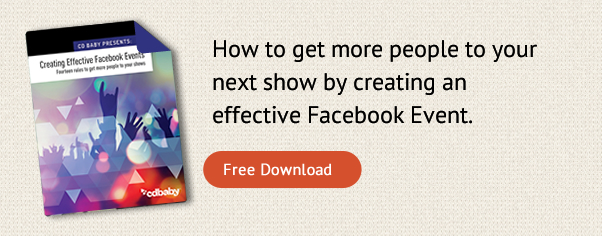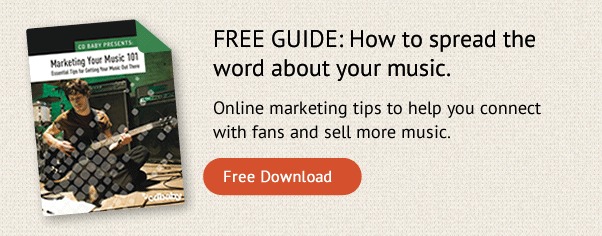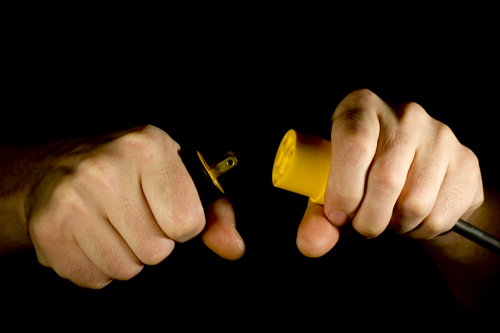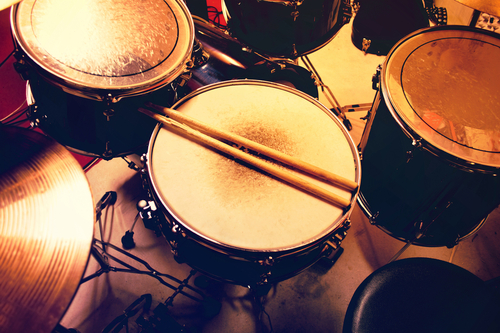 [This article was written by Adam “Nolly” Getgood, recording engineer, producer, and bass player in the band Periphery. To hear more recording tips from Adam, check out his free class online, broadcasting August 26-27.]
[This article was written by Adam “Nolly” Getgood, recording engineer, producer, and bass player in the band Periphery. To hear more recording tips from Adam, check out his free class online, broadcasting August 26-27.]
Recording drums is arguably the most difficult part of a session for an engineer working in modern rock genres. With upwards of 12 microphones on the kit itself as well as capturing the room ambience (often closer to 20, or more!), there are many chances to slip up and ruin a recording, but there are also so many ways to really fine-tune the sound – and that is where the joy of engineering comes from, for me at least!
Tuning the kit
Tuning a drum kit can be a very mysterious process for a beginner, but with some practice you can get to grips with the concepts quite quickly. I’d recommend borrowing or buying a halfway decent kit and some heads to experiment with.
There are myriad ways to skin the kit (ba-dum-TISH…) when it comes to tuning drums, but my experience is that drums record extremely well when the resonant heads are tuned higher in pitch than the batter heads. On the toms and kick, the slacker batter head will give a pleasing “slap” to the attack, while the tighter resonant head will prevent the drum from sounding “flabby” and minimize pitch bend. On the snare, keeping the resonant head tuned tight will get a crisp and responsive response from the snare wires, and elicit a lovely “poppy” attack when you hit the drum with some attitude.
Moon gel and other muffling devices can be a lifesaver in the studio for shortening the sustain of drums that are too resonant and washing over the sound of the other drums, but try to get the tuning of the drums perfected before applying these devices – they’re not Band-Aids for bad tuning!
One of the best tips I can give you is to use a pitch reference to be able to recall what notes the heads are tuned to on a given drum once you’ve found the sound you’re after. Not only will this greatly cut down on guesswork in the future, it will also enable you to touch-up the tuning of the kit you’re recording when you take breaks, so that your drum sounds are perfectly consistent through a session. There’s nothing worse than hearing obvious pitch changes in the snare and toms when you punch-in parts!
If you don’t feel confident tuning drums, hire a drum tech for your recording session – a good drum tech will quickly be able to get a kit sounding its best and keep it that way through a session, so you can focus on capturing the perfect performances.
Mic’ing the kit
This is an almost infinite topic, and every engineer will have their preferences – often contradictory!
My approach is to try to isolate the shells from the cymbals as much as I can, something the drummer has to help with too by not smashing his cymbals as hard as he can. In general I like to get the mics up close to the heads of the drums I am micing, not just for the isolation, but also to take advantage of the natural proximity effect (the low end enhancement that occurs when you place a mic close to the source – some mics are more subject to this than others). I like to use super-cardioid mics on the snare drum especially, since the narrower pickup pattern and null positions allow me to minimize the amount of hi-hat and other cymbals spilling into the snare signal, which typically can be an ugly issue once you start applying EQ and compression later on during mixing.
I’ve tried every overhead micing technique under the sun, and I always come back to the trusty spaced pair of cardioid condensers – when done correctly, the sound is fantastically wide and has a real sense of depth. My tip is to always make sure the two mics are equally spaced from the center of the snare head to ensure a really phase-coherent snare sound that sits exactly in the middle of the stereo field. I find that usually a distance of ~1.2m/4ft from the snare head to the mic capsule, and a spacing between mics of 3-4ft (depending on the size of the kit, and the desired stereo image width) gets an ideal balance of shells and cymbals. Often the hi-hat side mic will be a little higher and on the outer side of the cymbals, while the ride-side mic will be lower and more on the inner edge of the cymbals, over the top of the floor tom.
I always like to capture some of the room’s ambience while I’m tracking drums, to get a depth and airy decay to the drum sound without having to rely solely on a reverb unit in the mix. Every room is different, but I like to keep the mics fairly low to the ground if they’re close to the drums to highlight the drum shells and minimize cymbals. Experiment with putting baffles between the kit and the room mics to further reduce cymbal abrasiveness, and try placing mics outside the live room in reflective hallways or adjoining spaces for a really big, diffuse sound.
Phase is the bane of anyone engineering drums – whenever the same source can be heard coming through two or more microphones, you have to be sure that the signals aren’t cancelling out important information when they’re played back together. With so many mics pointed at the kit, and with drums and cymbals all leaking into every one of them, you have a potential nightmare on your hands. Monitor in mono and listen to pairs of mics in isolation, flipping the polarity of the signal on one mic at a time to hear whether they are working with or against each other. Ultimately you are always going to have some negative phase interactions occurring within a multi-mic’d drum sound, the key is to prioritize the most important pairings – the snare HAS to be working with the overheads if you want it to sound big and punchy, but I’m not going to sweat it if the spot mic on the splash cymbal isn’t quite in with the floor tom mic – the bleed from one to the other is going to be so minimal that in the context of the mix it will be inaudible, and once you’ve gated the tracks it will be non-existent.
Mixing the kit
It’s just the nature of the beast that no matter how amazing the source tones are, your raw recorded drum tracks are not going to sound like finished, commercial rock drum sounds. There is inevitably going to be a whole load of midrange mud clogging up your close-mic’d tracks, so it’s worthwhile using some EQ to dip out the worst offending “mud-zones,” while not being afraid of boosting up the top end frequencies in your drum tracks, to bring out air and clarity. For extra weight, zone in on the fundamental frequencies of each drum and reinforce them with careful EQ boosts, but don’t push these too far – moderation is key.
Compression will bring out the smack and sustain of your drums. Using a slower attack time and fast release settings on your compressor of choice will emphasize the impact of the drum – perfect for kick and snare channels; using a very fast attack will clamp down on the initial transient of the drum, squashing it down to give a rounder sound that focuses on the sustain – try that on toms for singing resonance, but be sure to use a gate or cut out the space between hits or else you’ll bring out a whole load of unwanted cymbal bleed.
Sending your drum tracks through a parallel bus of heavy-handed compression, then blending that in with the main drum sound is a great way to enhance your mix. Experiment with slow or fast attack settings to see what flavors you can get: as with before, the slower attack setting will give you a very punchy sound you can blend in for more smack, while a fast attack setting will provide you with a thick and smooth that you can blend to enhance the size and sustain of your drum sound.
Distortion and saturation can be a really fun world to explore when it comes to mixing drums too. Rock engineers have frequently been known to enjoy driving their preamps hard, or recording hot to tape to saturate the drum tracks they record, and while this can be done “on the way in,” you can also experiment with these sounds by running your drum tracks out from your DAW back through anything from mic preamps to guitar distortion pedals to achieve characterful and unique sounds.
—-
Author: Adam “Nolly” Getgood plays bass in Periphery, and spends his downtime in the studio engineering, producing, mixing and mastering for an exponentially increasing number of clients within the rock and metal world. With a modern and portable approach to music production that often challenges conventional wisdom, he has managed to craft a sound as progressive as the bands he records.
To learn even more of his studio secrets, tune into Periphery’s online class on CreativeLive, August 26-27 — sign up here to watch it FREE.
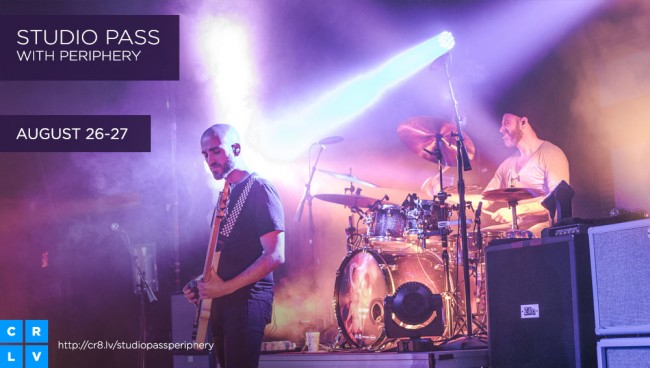
What are your best techniques for tuning, mic’ing, and mixing drums? Let us know in the comments below.

[Photo of drum set from Shutterstock.]
The post Recording rock drums: pro tips for tuning, mic’ing, and mixing the kit appeared first on DIY Musician Blog.
Source: Musician Resources



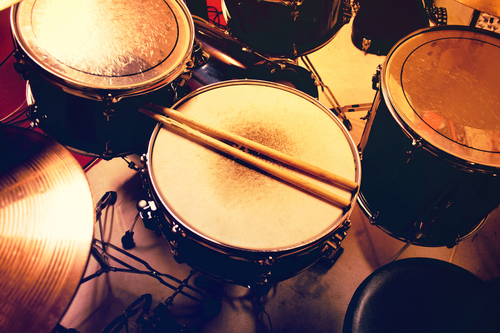



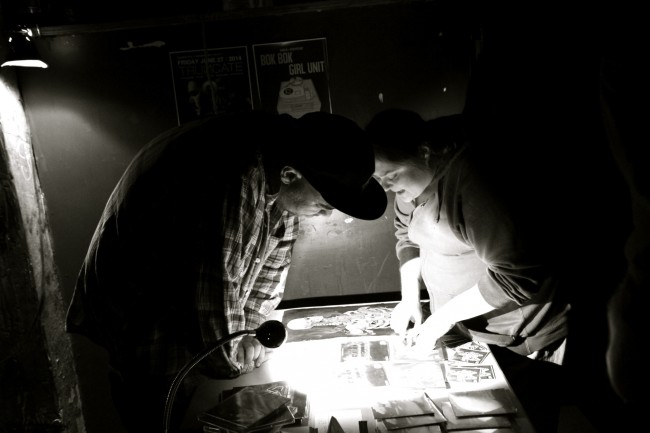
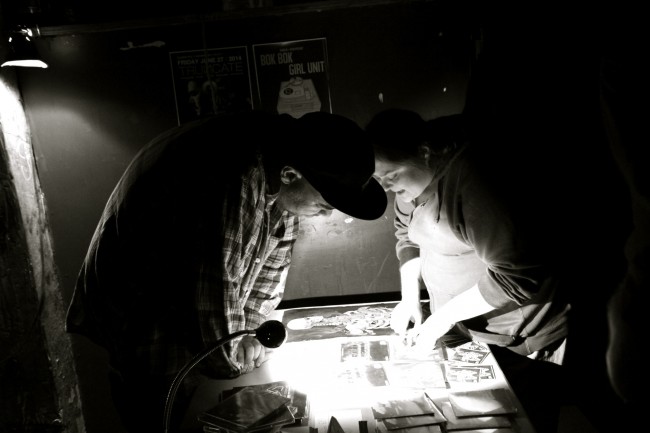 Off stage? Get to the merch booth NOW!
Off stage? Get to the merch booth NOW!